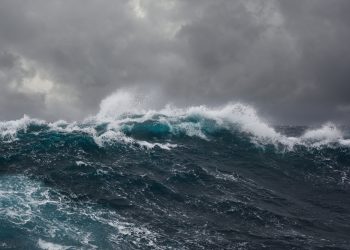IMO published a circular to disseminate information and guidance on the monkeypox disease, based on recommendations developed by the World Health Organization (WHO).
Since 13 May 2022, cases of monkeypox have been reported to WHO by 23 Member States that are not endemic for monkeypox virus, across three WHO regions. Epidemiological investigations are ongoing, however, the vast majority of reported cases so far have no established travel links to an endemic area and have presented through primary care or sexual health services. One case of monkeypox in a non-endemic country is considered an outbreak. The sudden appearance of monkeypox simultaneously in several non-endemic countries suggests that there may have been undetected transmission for some time as well as recent amplifying events.
[smlsubform prepend=”GET THE SAFETY4SEA IN YOUR INBOX!” showname=false emailtxt=”” emailholder=”Enter your email address” showsubmit=true submittxt=”Submit” jsthanks=false thankyou=”Thank you for subscribing to our mailing list”]
As of 26 May 2022, a cumulative total of 257 laboratory confirmed cases and around 120 suspected cases have been reported to WHO. No deaths have been reported. The situation is evolving and WHO expects there will be more cases of monkeypox identified as surveillance expands in non-endemic countries.
Monkeypox is usually a self-limited disease with the symptoms lasting from 2 to 4 weeks. The incubation period (interval from infection to onset of symptoms) of monkeypox is usually from 6 to 13 days but can range from 5 to 21 days. The infection can be divided into two periods:
- The invasion period (lasts between 0 to 5 days) characterized by fever, intense headache, lymphadenopathy (swelling of the lymph nodes), back pain, myalgia (muscle aches) and intense asthenia (lack of energy); and
- The skin eruption usually begins within 1 to 3 days of appearance of fever. The rash tends to be more concentrated on the face and extremities rather than on the trunk. The rash evolves sequentially from macules (lesions with a flat base) to papules (slightly raised firm lesions), vesicles (lesions filled with clear fluid), pustules (lesions filled with yellowish fluid), and crusts which dry up and fall off. The number of lesions varies from a few to several thousand. In severe cases, lesions can coalesce until large sections of skin slough off.
Fatality ratio
The case fatality ratio of monkeypox has historically ranged from 0 to 11% in the general population and has been higher among young children. In recent times, the case fatality ratio has been around 3 to 6%. Severe cases occur more commonly among children and are related to the extent of virus exposure, patient health status and the nature of complications. Underlying immune deficiencies may lead to worse outcomes.
Vaccination
Vaccination against smallpox was demonstrated through several observational studies to be about 85% effective in preventing monkeypox. However, today persons younger than 40 to 50 years of age (depending on the country) may be more susceptible to monkeypox due to cessation of smallpox vaccination campaigns globally after eradication of the disease. Complications of monkeypox can include secondary infections, bronchopneumonia, sepsis, encephalitis, and infection of the cornea with ensuing loss of vision.
Currently, there are two clades of monkeypox virus: the West African clade and the Congo Basin (Central African) clade. The Congo Basin clade appears to cause severe disease more frequently with case fatality ratio (CFR) previously reported of up to around 10%. As of now, the Democratic Republic of the Congo is reporting a CFR among suspected cases of around 3%. The West African clade has in the past been associated with an overall lower CFR of around 1% in a generally younger population in the African setting. Diagnostic assays specific for monkeypox have so far found that the West African clade of the monkeypox virus is present in this multi-country outbreak.
Currently, the overall public health risk at global level is assessed as moderate considering this is the first time that monkeypox cases and clusters are reported concurrently in widely disparate WHO geographical areas, and without known epidemiological links to endemic countries in West or Central Africa.
Anyone who has direct contact with an infected person, including intimate or sexual contact, can get monkeypox. Steps for self-protection include avoiding physical contact with the person. It is also critical to avoid intimate or sexual contact with someone with a localized anogenital rash and/or oral ulcers. During the early phase of this outbreak while information is still being collected, it would be prudent to limit the number of sex partners, keep hands clean with water and soap or alcohol-based gels, and maintain respiratory etiquette and hand hygiene.
If people develop a rash, accompanied by fever or a feeling of discomfort or illness, they should contact their healthcare provider and get tested for monkeypox. If someone is suspected or confirmed as having monkeypox, they should isolate at home or in an appropriate facility until the scabs have fallen off and abstain from sex. During this period, patients must be offered supportive medical care to ease monkeypox symptoms such as pain or itchiness. Patients should be monitored for early detection of any medical complications of the illness. Anyone caring for a person sick with monkeypox should use appropriate personal
protective measures.
Any rash-like illness during travel or upon return should be immediately reported to a health professional, including information about all recent travel, sexual history and smallpox immunization history.
Residents and travellers to monkeypox-endemic countries should avoid contact with sick mammals such as rodents, marsupials, non-human primates (dead or alive) that could harbour monkeypox virus and should refrain from eating or handling wild game (bush meat).































































